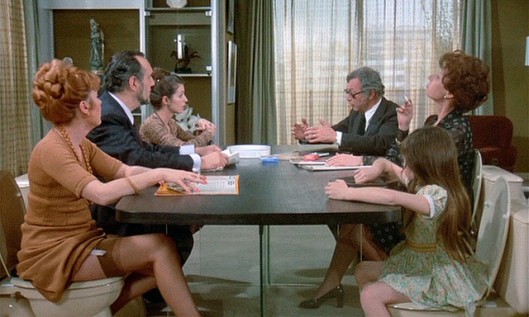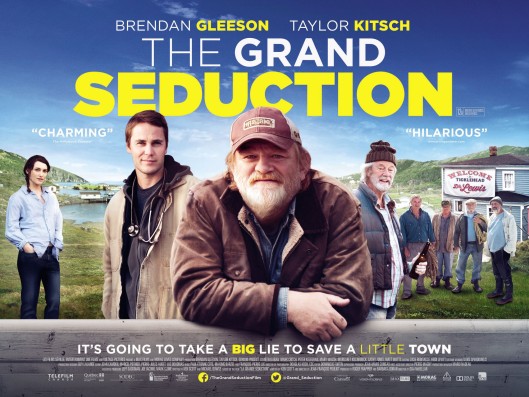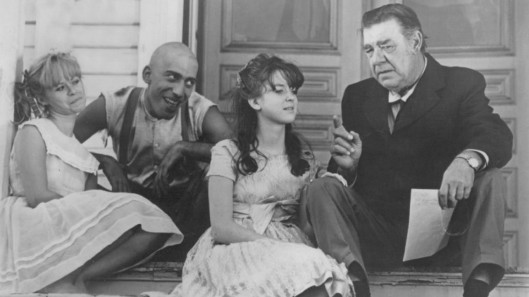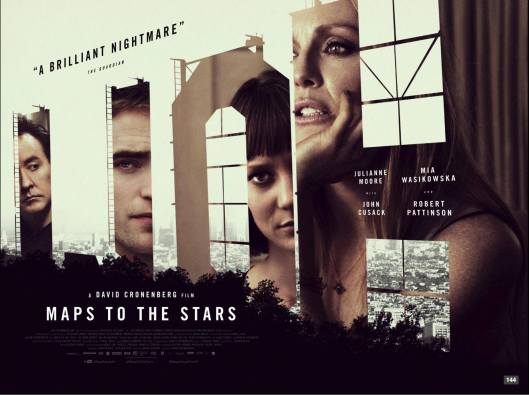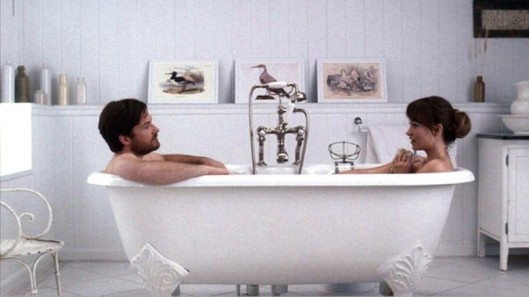D: Ivan Kavanagh / 92m
Cast: Rupert Evans, Antonia Campbell-Hughes, Hannah Hoekstra, Steve Oram, Kelly Byrne, Calum Heath, Carl Shaaban
Film archivist David, his wife, Alice (Hoekstra), and young son Billy (Heath) move into an old house near a canal. There are marital tensions: David suspects Alice of having an affair, and their lovemaking is perfunctory and passionless. While they get used to living in their new home, David’s colleague Claire (Campbell-Hughes) asks him to look through some old crime scene footage sent to the archive by the police. When he does, he discovers that the house was the site of a murder in 1902. The discovery has a profound effect on David who starts to imagine he can hear voices in the walls, and he begins to catch glimpses of a man in the house. He also has nightmares in which he sees the man kill his wife and then dump her body in the canal.
One day, Alice tells David she’ll be working late. He waits outside the place where she works and sees her leave with a man (Shaaban). He follows them along the canal to the man’s home. He finds his way inside and sees them having sex. David comes away upset and feverish. He heads back along the canal but becomes nauseous and stops in a disused public toilet to throw up. There he has what may be an hallucination involving the man he’s glimpsed at the house, and sees Alice at the side of the canal being attacked by the same man.
The next morning, David discovers that Alice hasn’t come home. He reports her as missing, and the case is investigated by Inspector McNamara (Oram). David continues to fixate on the house’s history and he learns more about the murder in 1902 and how it fits into a wider pattern of child abduction and ritual sacrifice. When Alice’s body is found in the canal it’s deemed an accidental death but David’s visions increase and so too his sense of paranoia. David tells Claire that he suspects the ghost of the man who killed his wife has killed Alice and is trying to kill Billy as well, but Claire doesn’t believe him. With the help of babysitter Sophie (Byrne) he tries to keep Billy safe, while attempting to find proof of the supernatural events happening around the house. But when McNamara returns with news that David was seen at the canal the night Alice died, David has no choice but to take Billy with him in a final chance to escape the dead man’s clutches.
Featuring one of the creepiest set ups of recent years, The Canal has enough chilling moments to make it one of the most effective scary movies of recent years. It’s a refreshing change to watch a horror movie where the nightmarish qualities of the script are brought so potently to life. Filmed in Ireland, The Canal is a dark, eerie, disturbing movie that uses well set up scares and shocks to keep the viewer on the edge of their seat. The depictions of past events are often shocking, but are used sparingly, their execution and careful inclusion adding to the tension and the horror.
The mystery of the murder in 1902 and its connection to the canal is the spine of the movie, making David’s growing paranoia and sense of mounting terror its meat. As the beleaguered archivist, Evans paints a convincing portrait of a man searching for a meaning to the strange phenomena happening around him, while also trying to maintain his sanity. It’s a standard characterisation seen in many other horror movies but here Evans’ performance lends a credibility to David’s reactions and motivations that isn’t that prevalent elsewhere. Evans’ sweaty, desperate turn anchors the movie throughout, and his early likeable, nervous approach makes David a sympathetic character the viewer can relate to. As events become darker and more intense, Evans never loses focus on the character and he helps ground the more lurid developments, so that David’s mounting terror is rendered with complete conviction.
Evans’ performance is one of the main reasons the movie is as good as it is. Another is the well constructed screenplay by writer/director Kavanagh, with its cleverly realised flashbacks, archival footage and photographs showing what really happened in 1902. Kavanagh also makes a virtue of the kind of choppy editing style that usually makes things more difficult to process, but here adds to the disjointed, off-kilter and unnerving sequences involving the dead husband and the children who watched him kill their mother before being meeting an even worse fate. These sequences carry a distinctive power that elevates the material and makes it all the more impressive in its visual styling.
The various scares – the man passing by open doorways, the sequence in the public toilet where blackened fingers appear over the top of a cubicle door, David’s vision of the murder in 1902 – are confidently presented and completely gripping. It’s occasionally uncompromising, rarely dull or distracting, and a tour-de-force of low budget inventiveness and emphatic editing. Ceiri Torjussen’s perturbing score adds a layer of menace to the proceedings and there’s sterling work from production designer Stephanie Clerkin that makes the house and its environs look unearthly even in daylight.
Rating: 8/10 – a genuinely scary movie that deserves a wider audience, The Canal is often a tough watch, but is bolstered by a cast and writer/director who know exactly what they’re doing; moody and demanding, this is entirely worthwhile and not for the faint-hearted.






























